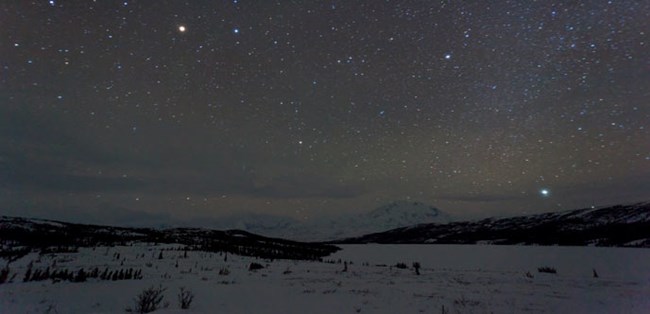|
Visit our keyboard shortcuts docs for details
A 2012 time-lapse compilation of the Aurora Borealis with original composition, "Coronal Mass Ejection," by Peter Van Zandt Lane.
Aurora Borealis (Northern Lights)The aurora is a beautiful, if hard to predict, phenomenon, that occurs year-round. Only in the fall, winter and early spring, however, is there enough darkness to allow us to see the northern lights when they occur. Plan the logistics of your trip using the resources below and then read about what to expect when viewing the aurora. How and When to See the Aurora in Denali
Where to See the AuroraIn the Denali area, nearly everywhere is free from human light pollution. No matter where your lodging or campground is located, you should have a good chance to see the aurora if the three factors above align for you. The best locations are those that provide a clear view of the northern horizon with no buildings, dense trees, or nearby mountains to block your view. Although the aurora can appear anywhere in the sky, it is most likely to first appear in the north, especially when auroral activity levels are low.If you are traveling elsewhere in Alaska, it may be possible to see the aurora from other locations. Areas north of Denali, around Fairbanks, offer a higher likelihood of seeing the aurora than areas south of Denali, towards Anchorage. However, these cities have more human light pollution, so look for darker, natural areas outside of more populated areas for the best viewing experience. 
NPS Photo / Jacob W Frank StargazingWith long hours of darkness, the fall, winter and early spring can be a fantastic time to view stars in Denali. Very little light pollution makes Denali a particularly great location for stargazing. Here, it's possible to see the Milky Way and thousands of faint stars that cannot be seen near cities. |
Last updated: November 24, 2021
